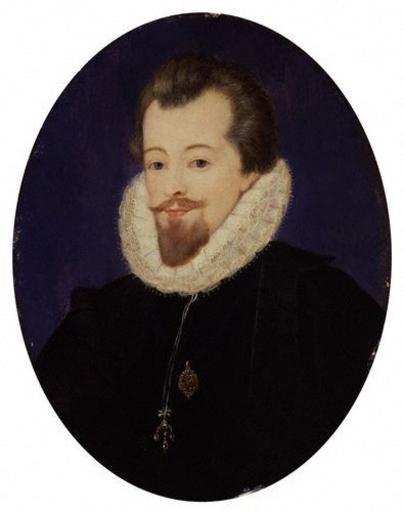MAKE A MEME
View Large Image

| View Original: | Robert_Cecil,_1st_Earl_of_Salisbury.jpg (395x500) | |||
| Download: | Original | Medium | Small | Thumb |
| Courtesy of: | www.flickr.com | More Like This | ||
| Keywords: jewellery london, st martin's place, wc2 0he londonstmartinsplacewc20he united kingdom unitedkingdom people indoor portrait after John De Critz the Elder,painting,19th century? Sir Robert Cecil, 1st Earl of Salisbury, KG, PC (1 June 1563 – 24 May 1612), son of William Cecil, 1st Baron Burghley, and half-brother of Thomas Cecil, 1st Earl of Exeter. After his education at St John's College, Cambridge,[1][2] Salisbury was made Secretary of State following the death of Sir Francis Walsingham in 1590, and he became the leading minister after the death of his father in 1598, serving both Queen Elizabeth and King James as Secretary of State. He fell into dispute with Robert Devereux, 2nd Earl of Essex, and only prevailed upon the latter's poor campaign against the Irish rebels during the Nine Years War in 1599. He was then in a position to orchestrate the smooth succession of King James. James I raised him to the peerage on 20 August 1603 as Baron Cecil, of Essendon in the County of Rutland, before creating him Viscount Cranborne in 1604 and then Earl of Salisbury in 1605. Lord Salisbury was extensively involved in matters of state security. The son of Lord Burghley (Queen Elizabeth's principal minister) and a protégé of Sir Francis Walsingham (Elizabeth's principal spymaster), he was trained by them in matters of spycraft as a matter of course. In 1603 his brother-in-law Lord Cobham was implicated in both the Bye Plot and also the Main Plot, which were an attempt to remove James from the throne and replace him with Lady Arbella Stuart. Salisbury served as both the third chancellor of Trinity College, Dublin and chancellor of the University of Cambridge [3]between 1601 and 1612. In addition, the Cecil family fostered arts: they supported musicians such as William Byrd, Orlando Gibbons and Thomas Robinson. after John De Critz the Elder,painting,19th century? Sir Robert Cecil, 1st Earl of Salisbury, KG, PC (1 June 1563 – 24 May 1612), son of William Cecil, 1st Baron Burghley, and half-brother of Thomas Cecil, 1st Earl of Exeter. After his education at St John's College, Cambridge,[1][2] Salisbury was made Secretary of State following the death of Sir Francis Walsingham in 1590, and he became the leading minister after the death of his father in 1598, serving both Queen Elizabeth and King James as Secretary of State. He fell into dispute with Robert Devereux, 2nd Earl of Essex, and only prevailed upon the latter's poor campaign against the Irish rebels during the Nine Years War in 1599. He was then in a position to orchestrate the smooth succession of King James. James I raised him to the peerage on 20 August 1603 as Baron Cecil, of Essendon in the County of Rutland, before creating him Viscount Cranborne in 1604 and then Earl of Salisbury in 1605. Lord Salisbury was extensively involved in matters of state security. The son of Lord Burghley (Queen Elizabeth's principal minister) and a protégé of Sir Francis Walsingham (Elizabeth's principal spymaster), he was trained by them in matters of spycraft as a matter of course. In 1603 his brother-in-law Lord Cobham was implicated in both the Bye Plot and also the Main Plot, which were an attempt to remove James from the throne and replace him with Lady Arbella Stuart. Salisbury served as both the third chancellor of Trinity College, Dublin and chancellor of the University of Cambridge [3]between 1601 and 1612. In addition, the Cecil family fostered arts: they supported musicians such as William Byrd, Orlando Gibbons and Thomas Robinson. | ||||